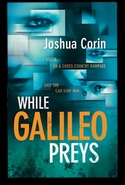
 The bookshelves at your local brick-and-mortar bookstores are teeming with how-to-write manuals. For the young fiction writer, there are classics such as E.M. Forster’s Aspects of the Novel and John Gardner’s The Art of Fiction, plus whole series devoted to specific prose concerns like plot construction and character development. For the budding playwright, notable must-haves include Lajos Egri’s The Art of Dramatic Writing, with its dialectic approach, and Jeffrey Hatcher’s The Art and Craft of Playwriting, with its more Aristotelian approach. For the up-and-coming screenwriter, some selections would have to be Syd Field’s nuts-and-bolts Screenplay and Christopher Vogel’s hugely influential The Writer’s Journey.
The bookshelves at your local brick-and-mortar bookstores are teeming with how-to-write manuals. For the young fiction writer, there are classics such as E.M. Forster’s Aspects of the Novel and John Gardner’s The Art of Fiction, plus whole series devoted to specific prose concerns like plot construction and character development. For the budding playwright, notable must-haves include Lajos Egri’s The Art of Dramatic Writing, with its dialectic approach, and Jeffrey Hatcher’s The Art and Craft of Playwriting, with its more Aristotelian approach. For the up-and-coming screenwriter, some selections would have to be Syd Field’s nuts-and-bolts Screenplay and Christopher Vogel’s hugely influential The Writer’s Journey.
But what’s a person to do if they’re like me, suffer creative attention deficit disorder, and want to excel in fiction, theatre, and film? Surely there have to be some tools which apply to all three. And so over the years, I’ve distilled a list of ten hard-and-fast principles which can apply to all forms of contemporary storytelling, regardless of genre or medium.
Now none of these principles, these commandments, are original to me. They have been collected and culled over years spent reading and studying craft, usually while curled up on a soft warm surface and/or beside a soft warm animal.
1. Show, don’t tell. Audiences (and readers) are always much more engaged in action than they ever are in speeches. Show your characters in pursuit of their goals. Show them succeed. Show them fail.
2. Keep it simple. Our most memorable stories are our simplest ones. Romeo & Juliet. Jane Eyre. It’s a Wonderful Life. Note the difference, pretty please, between simplicity and simpleness.
3. Even if you don’t know where you are, always know where you’re going. Would you get in a car and drive aimlessly for three hours a day every day? Sitting down to write without a benchmark in mind is nothing more than a creative exercise. You must always have a goal (even if it’s as mundane as Write for Three Hours or Get Protagonist Off-Stage).
4. Begin late, end early. By which I mean this: always start your play at the precipice of the exposition, right before the inciting incident. Give us a few minutes to know your characters and then dump them head-first into your plot pit. Or begin in medias res and force the audience to catch up. And by all means, when your protagonist has achieved his objective, End Your Story. Anticlimaxes are so…anticlimactic.
5. Nobody cares about someone who does nothing. No, Virginia, Hamlet is very much not a play about a man who does nothing. The Danish prince in fact does many, many things. He’s just tremendously neurotic (which is why he was such a perfect character for our tremendously neurotic 20th century). Always have your main character in pursuit of a goal. Goncharev’s Oblomov, perhaps the most slothful character ever to carry a book, is assertively slothful.
6. Change is good. This applies to both plot and character. Keep your plots twisting in an organic and ingenious fashion and your audiences will be enthralled. Similarly, show your characters twist as well. Have them change through the course of the tale. High Noon’s sheriff is very much not the same person he was at the beginning. Neither is A Doll House’s Nora Helmer or Great Expectation’s Pip.
7. Save your best for last. Just as anticlimaxes are anticlimactic, climaxes must be the absolute peak of audience engagement in your material. Save your best lines, best moment, and best reversals for your finale. End with a bang. Leave them breathless.
8. If you wouldn’t want to read it, don’t write it. Like most of these rules, this is fairly self-explanatory. “Write what you know” is the mistaken form of this adage. Write what you want to know. Write what you need to know. Just as audiences love an active, engaged character, so will they love the work of an active, engaged storyteller.
9. Plot = character = theme = style = setting = genre. This is my favorite rule on the list, and the one most easily forgotten. Just as form should balance content, content must in turn balance itself. It’s no coincidence that the chaos of A Midsummer Night’s Dream takes place in a labyrinthine forest. In a great work of literature, every element should directly relate to each other. It’s not linear; it’s circular.
10. All rules are made to be broken. But you must understand why the rules work in order to understand the circumstances in which they can be bent. James Joyce didn’t write Ulysses in a vacuum.
Finally, the best preparation any person can have to be an artist of any kind is to be an audience. Read and view everything. Ask yourself what works. Ask yourself what doesn’t. And then ask yourself what’s always the most important question: why? Let curiosity lead your imagination and you will never, ever be at a loss.
To comment on Josh’s blog please click here.


No Comments
Comments are closed.